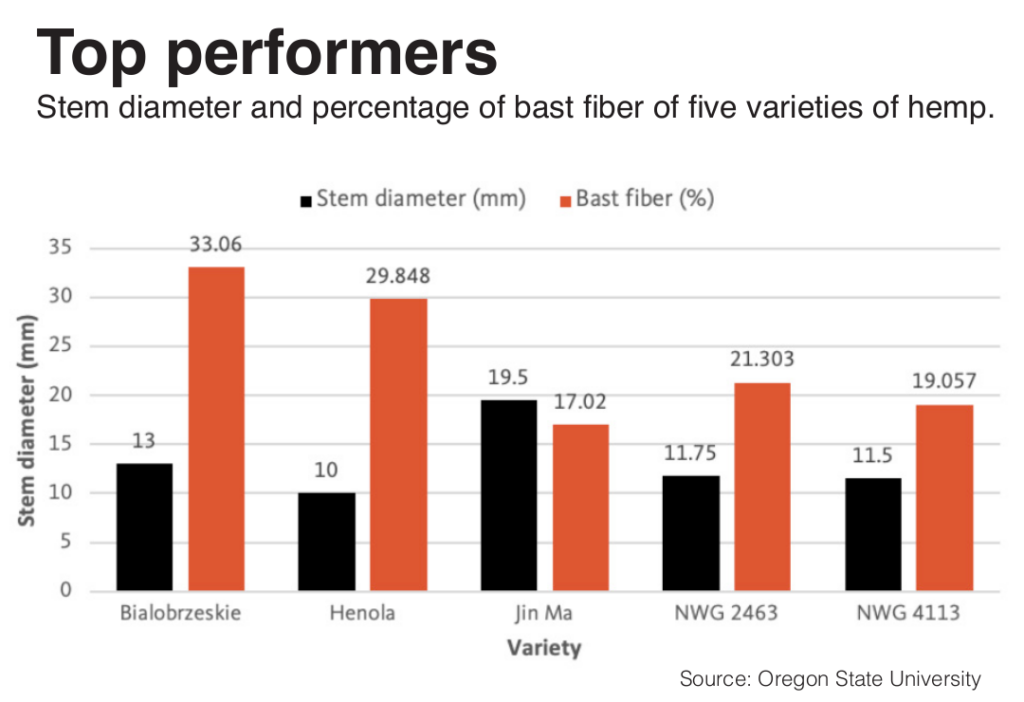Polish hemp varieties were the top performers in fiber hemp trials recently reported in a study by researchers at Oregon State University.
Henola, primarily a grain producer, and fiber-specific Białobrzeskie, had significantly higher bast fiber content, by percentage, compared to one Chinese cultivar and two American varieties in the trials, harvested in 2022.
The two Polish cultivars are from the Institute of Natural Fibers and Medicinal Plants (IWNiRZ), a government institution that controls Poland’s national hemp cultivars through its role in research, breeding, certification, seed production, and regulatory compliance. Both hemp varieties were developed by IWNiRZ researchers.
Consistent leaders
Henola, a new-era variety, has also proved itself a top grain producer in trials in North Dakota and Australia. Białobrzeskie, a legacy Polish fiber cultivar, also had a strong showing among fiber varieties in the North Dakota trials two years ago.
Henola’s performance as a fiber producer means the variety, initially developed to produce hemp seeds, is emerging as a strong option for dual cropping of grain and fiber.
Other varieties in the Oregon trials were Jin Ma of China and NWG 2463 and NWG 4113, American varieties from Colorado-based New West Genetics. All of those are fiber varieties.
Key indicators in the study were the stem diameter of the plants and the percentage of bast fiber in the yield.

The two Polish hemp varieties are monoecious while the others are dioecious, reproductive differences that can affect variables such as pollination and fertilization, and plant development.
Bast fibers, the most valuable part of the hemp stalk, are the long, stringy fibers extracted from the outer layer of the stem. Their durability, flexibility, and resistance to degradation make them a robust and sustainable raw material for such diverse end products as textiles, paper, biocomposites, insulation and plastic.
Hemp varieties differ in their ability to produce concentrations of bast fiber, one indication of fiber quality, according to the study. While the greatest bast fiber content, by percentage, was associated with the Bialobrzeskie and Henola varieties, the other three varieties were similar in the total bast fiber produced.
To read more, click on Hemp Today

